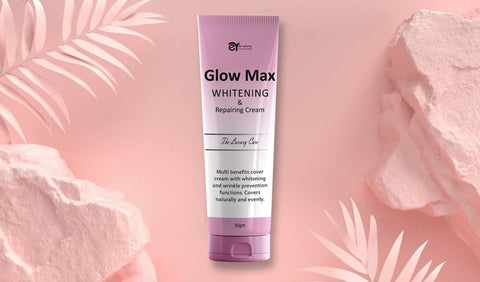Your body’s barrier against free radicals is your skin. Frequently, damage is brought on by harsh environments. Use ceramides, oils, and other protective agents to keep it safe.
There are many items on the shelves of drugstores and beauty supply stores that claim to protect and renew your skin. Some of them exfoliate, some plump, and some moisturize.
All of these products share the property of acting on the skin barrier, which is the outermost layer of your body. But what exactly does your skin barrier do, why, and what can harm it?

What is the function of your skin barrier?
Layers of skin cover your body, and each one plays a crucial role in defending it.
The stratum corneum, the topmost layer, is frequently compared to a brick wall trusted Source. It is made up of coenocytes, which are tough skin cells, and mortar-like lipids that hold them all together.
Your skin serves as a barrier. Keratin and organic moisturizers are found within the skin cells, or “bricks,” of the body.
In addition, if your skin barrier were to fail, your body’s water content would escape and evaporate, leaving you wholly dehydrated.
To ensure overall health and proper body operation, your skin barrier must be safeguarded.
Your skin’s barrier can be harmed by these things
Every day, your skin defends itself against a slew of threats, most of which originate from outside your body and a few of which do.
Your skin barrier may be impacted by both internal and external factors, including:
● Climate that is either too dry or too humid
● Pollution, irritants, and allergens
● Overexposure to the sun
● Being exposed to harmful chemicals
● Excessive washing or exfoliation
● Genetic predispositions that may increase your risk of developing psoriasis and atopic dermatitis, among other skin conditions
How do you know if the skin’s protective layer is compromised?
When your skin barrier is not functioning properly, you may be more prone to developing the following skin symptoms and conditions:
● Scaly and dry skin
● Itchiness
● Textured or discoloured areas
● Acne
● Affected or sensitive areas
● Skin infections caused by viruses bacteria, or fungi
How to strengthen and repair your skin’s barrier?
What can you do to keep your skin barrier and acid mantle both healthy and functional, given the significance of maintaining them? Let’s take a look at five strategies that can help.
1. Simplify your skin care regimen
You might unintentionally weaken your skin barrier if your daily skin care routine is complicated and involves a lot of different products. The best and most important skin care products can be discussed with a dermatologist or other skin care specialist.
2. Consider using a soft moisturizer
Moisturizers are frequently suggested as a solution for dry skin, which is a common issue. Reduced water loss from your skin thanks to an occlusive moisturizer helps the skin barrier. These cosmetics leave a light film on your skin that aids in retaining moisture.
The clinically-proven ability of Glow Max Whitening and Repairing Cream to reduce pigment spots and skin discoloration makes it a well-known, highly effective inhibitor for melanin, different types of freckles, spots on the skin of older people, pigmentation, and acne scars.
It has excellent results in treating general skin pigmentation disorders of the face and body, evening out skin tone, eradicating age spots, pregnancy marks, freckles, and other blemishes.
It has an Active Naturals Complex concentration that has been scientifically proven to work in combination with tone-evening to keep you looking young and radiant. Working to combat dryness and ongoing environmental damage at each dermal layer.
3. Limit how frequently and how long you wash your face
While water is necessary to keep our skin hydrated and functioning normally, it can also cause further damage to our skin by further drying it out. In order to prevent aggravating the loss of your skin’s lipid barrier, wash your face no more than once or no more than twice per day with lukewarm water and mild, low-pH cleansers.
4. For a while, stop exfoliating
Stop exfoliating if you have a damaged skin barrier so that your skin can repair itself. You can gradually begin incorporating exfoliation into your routine once all of the symptoms have disappeared.
5. Keep your skincare regimen easy to follow
Indeed, stick to the fundamentals. This lessens the likelihood that your already irritated skin will become further irritated. Cleanse, moisturize, and protect are the procedures to follow in order to maintain a healthy skin barrier when it is at its weakest.
During the recovery period of your barrier, these three steps are crucial. Any additional hydration from toner and/or serum is a bonus, but be sure to understand the characteristics of the serum you’re currently using.









